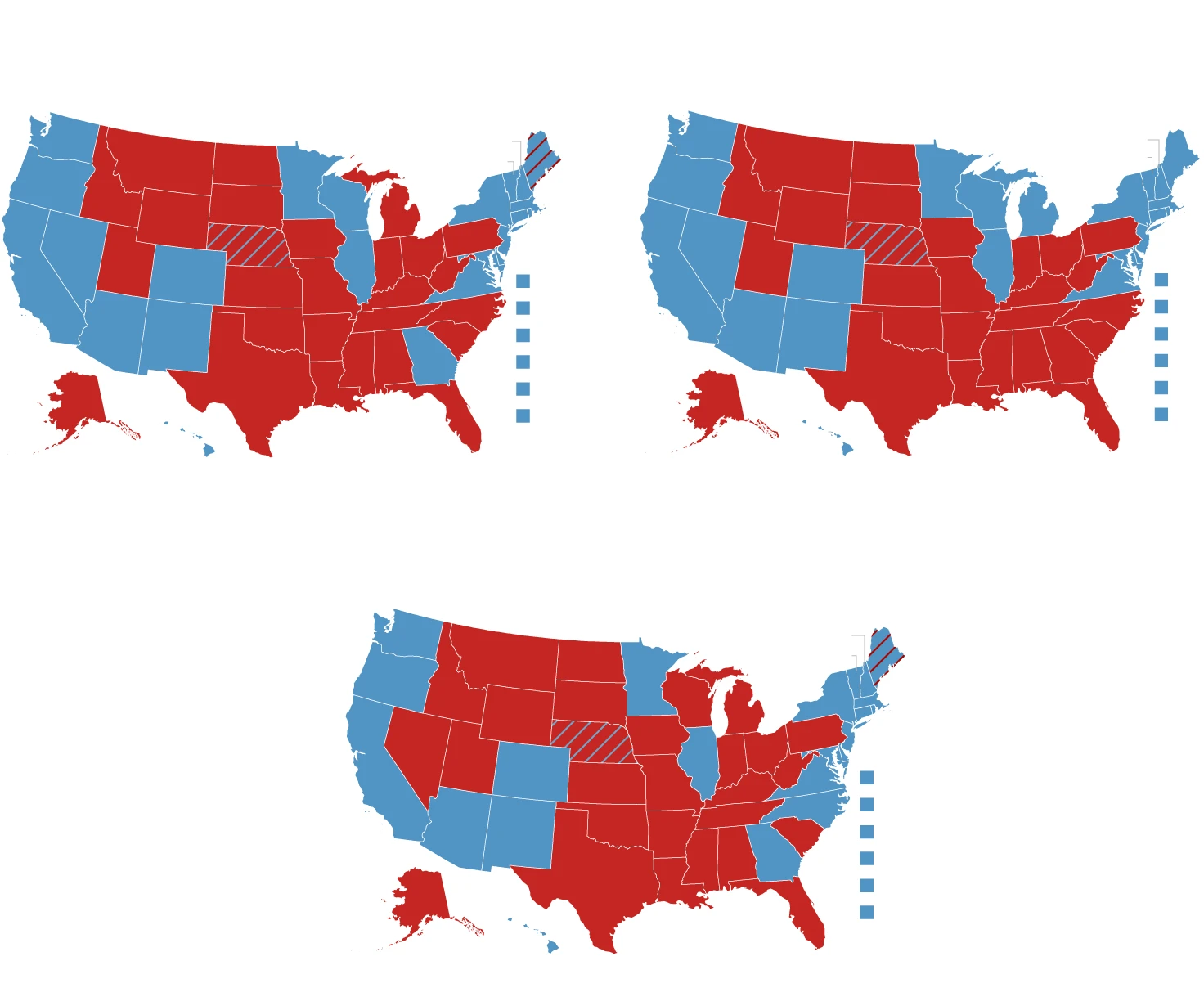Original | Odaily Planet Daily (@OdailyChina)
Author | Azuma (@azuma_eth)

The U.S. election will officially begin tomorrow, but it seems many readers still have some confusion about when the final election results will be available.
- Odaily Note: For an introduction to some basic concepts about the U.S. election, you can read “Must-Read Before the U.S. Election: Everything You Need to Know”.
Generally, preliminary results can be expected on election night
According to data compiled by Yahoo Finance, from 7:00 AM Beijing time on November 6 (Eastern Time, November 5), states will gradually finish voting until 1:00 AM on November 6 (2:00 PM Beijing time). After that, each state will begin to announce the results of the public votes as they complete the counting. However, due to differences in election methods, ballot handling, and counting rules among states, the timing of result announcements will also vary.

Considering the realities of the election, the actual outcome largely depends on the situation in seven key swing states: Georgia, North Carolina, Michigan, Pennsylvania, Arizona, Wisconsin, and Nevada. Among these, Georgia will be the first to complete voting at 8:00 AM Beijing time on November 6, while Pennsylvania, the "battleground state" with the most electoral votes among the swing states, will finish voting at 9:00 AM Beijing time on November 6. Nevada will be the last to complete voting at 11:00 AM Beijing time on November 6.
Based on this situation, several mainstream U.S. media outlets, including CNN, predict that preliminary election results are expected to be determined on election night, corresponding to around noon or afternoon Beijing time on November 6.
Will there be "unusual" situations?
Where there are general situations, there will naturally be unusual ones.
Looking back at the real history of U.S. elections over 236 years, there have indeed been instances of "delayed" results. The causes of these "delays" vary, such as extremely close vote counts, multiple candidates failing to secure the minimum electoral votes, unexpected extensions in counting time, or a key state needing to recount due to very close vote distributions…
In 1800, the U.S. election experienced an extreme situation where candidates tied, which forced the U.S. to amend its election rules (though the probability of a tie occurring now is still very low, as will be discussed later); the 1824 election saw all candidates fail to secure enough electoral votes, marking the first and only time in history that the House of Representatives elected a president.
Even setting aside these 200 years of "American history," there have been several elections in the 21st century where results were delayed for varying lengths of time, including the 2020 election in which Trump was personally involved, and the 2000 election, which took a full 36 days to produce results.
2020 Election (Delayed by 4 Days)
The election day in 2020 was November 3 (U.S. elections are held on the first Tuesday of November every four years), but due to the pandemic, the number of voters choosing to vote by mail increased significantly, which also extended the time needed for counting.
It wasn't until November 7, when Biden won Pennsylvania and Nevada, two major swing states, that he secured over 270 electoral votes and the election results were preliminarily determined.
Notably, in this election, Trump declared victory early and repeatedly criticized the Democrats for election fraud after preliminary results were released, but ultimately this did not change the election outcome — if Harris wins this time, it is not impossible for Trump to cause a second uproar…
2000 Election (Delayed by 36 Days)
The election day in 2000 was November 7. Initially, everything went smoothly, and by the morning of November 8, as states began to announce their counting results, Democratic candidate Gore had secured 250 electoral votes, while Republican candidate Bush followed closely with 246 votes, just a step away from the 270 votes needed for victory.
At this point, Florida, with 25 electoral votes, was about to start counting. Whichever candidate won Florida would cross the 270-vote threshold and ascend to the presidency. Ultimately, Florida announced that Bush had won the state by a very narrow margin, but the counting results showed that Bush had only 1,700 more popular votes than Gore, a difference that accounted for just 0.03% of the total votes in the state. According to Florida law, if the vote difference between two candidates is less than 0.5%, a recount is mandatory.
On November 10, Florida completed a machine recount, but Bush's lead was significantly reduced to 327 votes. Gore immediately applied for a manual recount in local court. Subsequently, both sides engaged in intense legal battles over whether to conduct a manual recount, the areas to be counted, and the final deadline for counting. It wasn't until December 9 that the U.S. Supreme Court halted Florida's manual recount and ruled on December 11 that no further manual recounts would be conducted, upholding the previous results signed by the Secretary of State. Gore ultimately conceded on December 13.
At this point, a full 36 days had passed since the election day.
In the most extreme case, could there be a 269:269 tie?
Returning to this election, while the probability is extremely low, it is still possible for a 269:269 tie to occur.
For example, if Harris wins Wisconsin, Michigan, Arizona, and Nevada, and secures one electoral vote in Nebraska (which Biden won in 2020), but loses Pennsylvania and Georgia, then the vote count would be 269-269.
As shown in the image below, the election website 270 to Win also lists other potential tie scenarios.

If such a situation occurs, how would the president be decided?
According to the Twelfth Amendment enacted after the 1800 election, if no candidate secures enough electoral votes (currently 270), then the new Congress sworn in on January 3 will elect the president, while the Senate will elect the vice president; this process is known as a "contingent election."
According to an analysis by the Congressional Research Service, if such an extreme situation arises, Congress is expected to hold a "contingent election" on January 6. Considering that in the "contingent election" model, each of the 50 states has one vote, and the Republican Party currently controls more House delegations, this means that Trump is more likely to be elected president in this scenario.
Moreover, there is an even more extreme situation — if the House delegations fail to elect a president before the inauguration day on January 20, the new vice president elected by the Senate will become the acting president… but clearly, the probability of this situation is so low that it is almost impossible.
Awaiting Results
In summary, the various unexpected scenarios from the elections of 1800, 1824, 2000, and 2020 illustrate that there is a certain degree of uncertainty regarding when the results of the U.S. election will be announced. However, under normal circumstances, the market still expects that the new occupant of the White House will be preliminarily determined on November 6.
Everyone will need to wait a day or two longer to witness the final results. At that time, the previously unclear market trends may also become somewhat clearer.
免责声明:本文章仅代表作者个人观点,不代表本平台的立场和观点。本文章仅供信息分享,不构成对任何人的任何投资建议。用户与作者之间的任何争议,与本平台无关。如网页中刊载的文章或图片涉及侵权,请提供相关的权利证明和身份证明发送邮件到support@aicoin.com,本平台相关工作人员将会进行核查。




